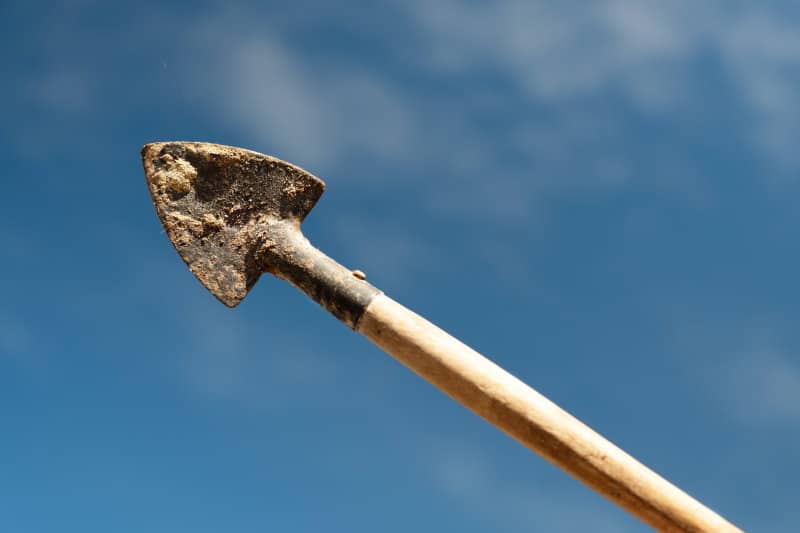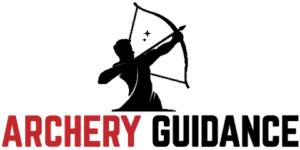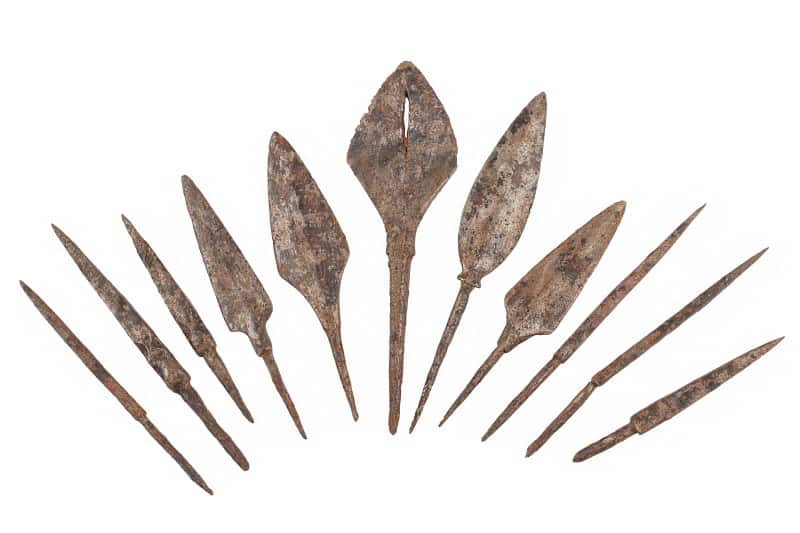If you’re new to archery, then you’ve likely encountered lots of new vocabulary here on Archery Guidance. We’ve discussed the importance of fletching and size in picking arrows, but we haven’t looked at tips and inserts yet. Since they’re necessary for our arrows to actually stick into their targets, they’re kind of a big deal.
But do you know if your arrows come with them? Or do you have to buy them separately?
Most arrows include tips and inserts as part of the purchasing price. In fact, they most often also include fletching and have been previously nocked so that you don’t have to. This is done so all you have to worry about when you are buying arrows is making sure that the length and the weight are correct for your specific needs. It should be noted that, despite how many arrows already come with these parts, not all of them will. Arrows can be purchased without them, thus requiring you to attach them yourself. You may also desire to change tips at a later date, which is totally doable.
So, while many arrows do come with tips, there is more to the discussion than a simple yes. There are different kinds of tips to choose from, each with a different effect. We will look at these and more throughout the remainder of this article, so stick around.
Understanding Arrow Tips and Inserts
While it would be impossible to claim that any one piece of the arrow is more important than the rest, there would be a good case to make that the tip is up there as one of the most important pieces of an arrow. If our arrows didn’t have tips, we would be simply slinging wooden sticks at our targets. We could still manage to hit the target, but it’s gonna be much harder to do so, and the end result would likely be a shaft falling to the ground rather than sticking into our target.
You probably could use a tipless arrow during target practice, so long as you had a camera pointed on the targets to review where the shot landed, but it would be absolutely impossible to hunt game without tips on your arrows. Thankfully, as mentioned above, most arrows do, in fact, come with tips and inserts. If you don’t know what a tip or an insert is, then this conversation may be a bit difficult to follow, so let’s define these components.
The following video will give you a great look at how to attach tips to your arrows, if they don’t already have them. You will see in the video that a small tip is being used:
The tip isn’t just attached to the arrow, but rather to an insert. An insert is a small aluminum sleeve that the arrow tip screws into. The sleeve is then placed over the end of the arrow shaft. This creates the illusion of the arrow tip coming out of the shaft, as if it were all one component rather than three different ones.
Arrow inserts are simple pieces of equipment, but without them, we wouldn’t have tips on our arrows. The biggest difference between inserts is their size and what they are made from. While most are aluminum, some are made of plastic. What size insert you use is decided not by personal taste, but rather matched to the size of the shaft being used. We looked at how the thickness of an arrow is calculated and what effects it has on accuracy here.
While there isn’t much variation in inserts, the same cannot be said for tips. Arrow tips come in all sorts of different shapes and sizes, depending on what you are planning to do. If you are looking to hunt, then you’ll want a different tip than you would for target shooting. Since most arrows come with tips, it is a smart idea to understand your options before buying.
One of the most common arrow tips is called bullet tips. They aren’t actually bullets, though they take their name from their shape, as they could easily be confused for bullets at a quick glance. The shape is effective at puncturing into a target, so there’s no surprise that it works as well for arrows as it does for rifles. These tips are best used when you are practicing, or if you are hunting small game such as birds:
- Field tips are pretty similar to bullet tips, but they have a much sharper point and there is more definition between the body of the tip and the head. This helps reduce how strongly they stick into their targets. They are useful for hunting, as removing a stuck arrow can cause excess damage. You might think that this is irrelevant, but if you are looking to stuff or eat your kill, then limiting the amount of damage will make it easier to prep the carcass later.
- Blunt tips are used exclusively for hunting small animals. These tips don’t stab into the target; instead, they smash into them. While getting shot with one of these would hurt us, chances are, they wouldn’t kill. However, when a small animal gets struck by the force of one of these, they don’t stand a chance. This is a way of limiting the damage to the animal, but it also reduces the chance of sticking the animal and not killing it immediately.
- Broadhead tips are the most common hunting arrow. These are aerodynamic heads that greatly increase the speed and distance the arrow will travel. While the other tips that we’ve looked at are best used for practice shooting or hunting small game, broadhead tips have the ability to take down larger game because they open up big wounds. If you can line your shot up with a vital organ, then the broadhead will be able to do the damage needed to bring it down.

What’s the Best Tip for Me?
This depends on your goal. If you are looking to hunt, then you’ll want to stick with broadhead tips like these. These are better for larger game, but they can be used on smaller game if the opportunity presents itself. Just make sure you take your time when aiming and shoot carefully to reduce the risk of merely wounding the animal.
If you are new to archery, stick with bullet tips for the time being. You can purchase a lot of them for quite cheap, as you can see here. These are also far cheaper than any of the other styles, so they will be your best bet while building up your skills and getting a hang of the sport.
Keep in mind that these links are for purchasing the tips themselves—not full arrows. You can find full arrows here. If you are just starting out, you’ll probably want to stick to bullet tips and standard arrows. You can always learn how to cut your own arrows and really take control of what you shoot later. For more information on cutting arrows, check out this post.

What If I Need to Buy Inserts?
Good news—inserts are super cheap, plentiful, and easy to find. When possible, you want to find yourself a high quality, well known brand because they’ll offer the most options. For example, this listing for Yeseje inserts is fantastic. Not only does it link you to the project selected, but it also allows you to pick different sizes for the same insert.
This is important because you need to figure out the size of your arrow spine before you go purchasing inserts. Otherwise, you will find yourself with an improperly sized insert that doesn’t want to grip onto the arrow’s spine. That is to say, if it isn’t already too small to fit the spine in the first place.
Outro
Most beginning archers will have no need to attach tips to their arrows, since many arrows are already sold with inserts, tips, and even fletching in place. When this is the case, all you need to do is take your arrows out of their packaging, and they’re ready to shoot.
However, picking the right tips is incredibly important. You wouldn’t grab a spoon to cut a steak and you wouldn’t use a blunt tip for target practice. There is a proper tool for every task. Being able to pick the right tip for what you want to do goes a long way toward making your archery experience a pleasant one.
As you get better and you start to gain more experience with your arrows, you’ll find yourself wanting to personalize them and take a little more control over them. This will be the right time to start trying out new heads or even making your own arrows. Archery Guidance looks forward to helping you when this time comes.

